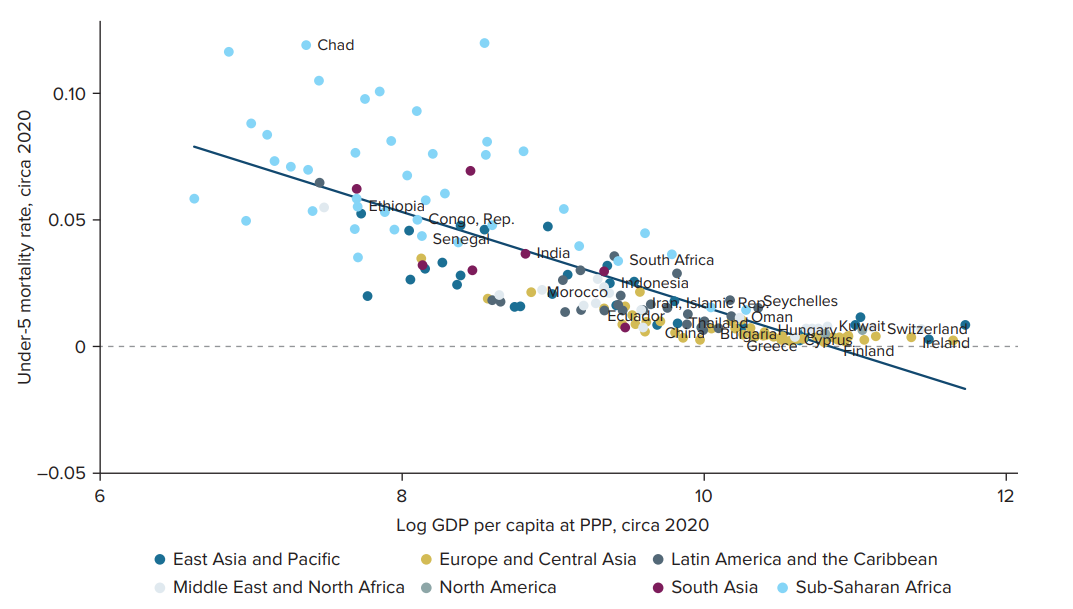-
CENTRES
Progammes & Centres
Location
Nurturing youth capital and well-being is not only a moral imperative but also an economic necessity

This essay is part of the series: World Health Day 2024: My Health, My Right
Youth capital advancement is a cornerstone of a nation's development, serving as a primary catalyst for economic progress and fostering resilient societies. Despite substantial improvements in health, education, and income indicators over recent decades, many Global South nations still need to catch up in achieving the common objectives set by the United Nations Sustainable Development Goals (SDGs).
SDG 3, with its focus on “Good Health and Well-being,” plays a pivotal role in shaping the trajectory of youth well-being, underscoring its exceptional importance for the youth, particularly during adolescence—a critical period where factors contributing to long-term well-being are acquired and solidified. Within SDG 3, several youth-impacting indicators demand attention. These include the 'Maternal Mortality Ratio,' 'Neonatal Mortality Rate,' 'Number of HIV-positive cases,' and 'Mortality rate attributed to cardiovascular diseases.' Beyond their direct impact on youth, these indicators have far-reaching implications for society as a whole.
Investing in youth goes beyond advancing human capital; it requires adopting an intrinsic well-being approach. This framework delineates various domains of adolescent well-being, encompassing parameters from health and nutrition to skills and employability (see Table 1). While physical and mental health are vital components, broader definitions of well-being include subjective experiences and objective quality of life.
Table 1: Domains of Well-being
| Domain | Subdomains | Requirements | Type of Well-being |
| Good health and optimum nutrition | - Physical health capacities - Mental health capacities - Good health and nutrition | - Access to adequate information, care and services. - Access to a healthy environment in the form of water sanitation, etc. - Opportunity for physical activity. - Access to balanced and healthy diet as per individual requirements. | - Physical - Nutritional - Emotional - Sociocultural |
| Connectedness, positive values, and contribution to society | - Connectedness - Value and Respect - Attitudes - Interpersonal Skills - Activity - Change and Development | - Opportunity to develop positive and meaningful relationships. - Opportunity to be involved in decision-making. - Opportunity to develop personal responsibility. - Opportunity to develop empathy, friendships, and sensitivity. - Opportunity to be socially, culturally and civically active. - Opportunity to develop skills to contribute to community development. | - Emotional - Sociocultural |
| Safety and a supportive environment | - Safety - Material Conditions - Equity and Equality - Non-discrimination - Privacy - Responsiveness | - Protection from violence and exploitative interests. - Right to food and nutrition, water, housing, heating, clothing and physical security. - Supportive legal and policy framework and access to information about the same. - Right to practice personal beliefs without discrimination. - Views not shared without consent. - Access to safe and stimulating opportunities. | - Physical - Emotional - Sociocultural |
| Learning, competence, education, skills, and employability | - Learning - Education - Resources - Skills - Employability - Confidence | - Development of motivation and commitment to learning. - Access to formal education till the age of 16, and opportunities for formal and non-formal education after that. - Opportunity to develop resources, skills and competencies. - Opportunity to develop technical, vocational, business and creative skills. - Opportunity to participate in non-exploitative and sustainable education. - Encouragement to develop confidence. | - Emotional - Cognitive |
| Agency and resilience | - Agency - Identity - Purpose - Resilience - Fulfilment | - Opportunity to develop self-esteem and a sense of agency. - Safe space to develop clarity and comfort in identity. - Opportunity to develop resilience and the ability to deal with adversity. - Opportunity to fulfil potential. | - Emotional - Cognitive |
Source: Ross et al. (2020), “Adolescent Well-Being: A Definition and Conceptual Framework”
Panel data analysis spanning 118 developing countries from 1971 to 2000 illustrates the tangible benefits of health improvements on a nation's economic prospects. A one-year increase in life expectancy is associated with a 4-percent higher growth rate. Nations showcasing advancements in schooling numbers witness higher degrees of access to formal banking systems, improved health, reduced fertility rates, and increased technology adoption.
Disparities in under-5 mortality rates contribute to a significant gap in per-capita GDP between low and high-income countries (see Figure 1). This gap underscores the interconnectedness of health and economic prosperity, emphasising the need for comprehensive interventions to bridge these divides.
Figure 1: Relationship between Under-5 Mortality and Per-Capita GDP by World Regions, 2020 
Source: The Human Capital Index 2020 Update, World Bank Group
The economic-health relationship is evident on a global scale, with African nations facing higher mortality rates compared to their European, Central Asian, and Pacific counterparts. Public health investments, often fuelled by economic progress, contribute to better health outcomes. Nations like France, Switzerland, and Germany, investing over 11 percent of their GDP in public healthcare, exemplify this correlation. In contrast, India's healthcare investment remains low, hindering progress toward the National Health Policy's target of 2.5 percent of GDP by 2025.
The impact of the COVID-19 pandemic has significantly impeded advancements in health and well-being. Restricted movements and stressed health systems have created challenges in addressing critical indicators related to the youth population. The Commonwealth's Youth Development Index 2020 report identifies two specific areas demanding special attention in the post-pandemic scenario. Firstly, legislation regarding youth's access to mental health services becomes crucial, given elevated levels of educational disruptions, isolation, and unemployment. Secondly, the report highlights the alarming levels of road traffic fatalities among the youth, calling for targeted interventions.
Restricted movements and stressed health systems have created challenges in addressing critical indicators related to the youth population.
In conclusion, nurturing youth capital and well-being is not only a moral imperative but also an economic necessity. Partnerships between developing and developed nations offer a promising avenue for achieving the common objectives of SDG 3. Such collaboration could facilitate knowledge exchange, resource sharing, and coordinated efforts to address the multifaceted challenges affecting youth well-being. A holistic approach within the SDG framework, encompassing health, education, and intrinsic well-being, is essential for creating resilient societies and advancing sustainable development on a global scale.
(Note–For a more detailed analysis, please see ORF Occasional Paper No. 381 “The Crucial 60 Percent: Building the Commonwealth’s Youth Capital”)
Soumya Bhowmick, Associate Fellow, CNED, ORF
The views expressed above belong to the author(s). ORF research and analyses now available on Telegram! Click here to access our curated content — blogs, longforms and interviews.

Soumya Bhowmick is a Fellow and Lead, World Economies and Sustainability at the Centre for New Economic Diplomacy (CNED) at Observer Research Foundation (ORF). He ...
Read More +